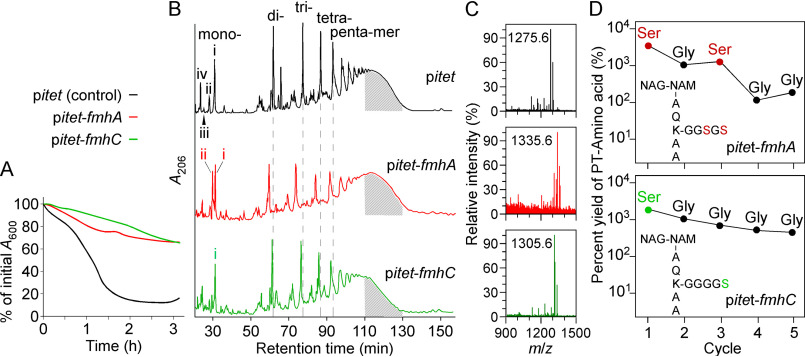Figure 2.
Phenotypic characterization of strains overexpressing fmhA and fmhC. A, overnight cultures of WT strain Newman carrying control vector pitet, pitet-fmhA, or pitet-fmhC were treated with lysostaphin, and lysis was recorded as a decline in A600 over time as described for Fig. 1C. B, peptidoglycan prepared from the same strains grown to A600 0.8–1.0 was treated with mutanolysin, and products were resolved by HPLC as described for Fig. 1D. Peaks denoted with Roman numerals (i–iv) were subjected to MALDI-TOF analysis and m/z values of the corresponding species are listed in Table 1. Shaded area under curves between 110–130 min highlights higher order cross-linking of peptidoglycan fragments (47). C, MALDI-TOF spectra of species eluting in peak i shown in panel C. D, Edman degradation profile of the major peptidoglycan fragment in peak i of the samples overexpressing fmhA and fmhC. The yield of released phenylthiohydantoin (PT)-modified amino acids is shown for five cleavage cycles.

